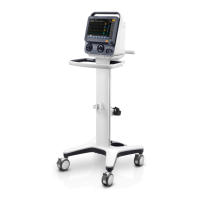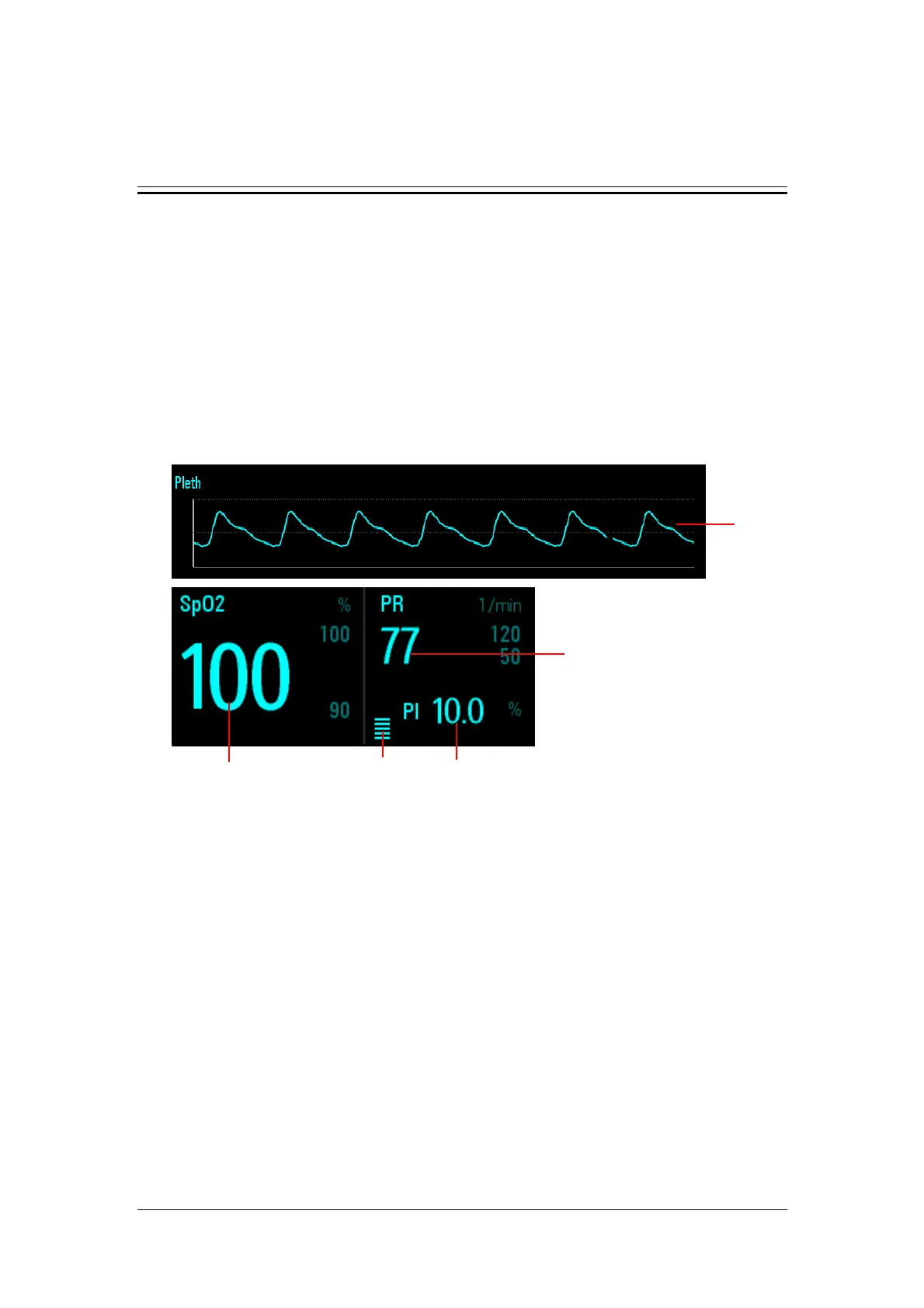8-1
8 SpO
2
Monitoring
8.1 Introduction
SpO
2
monitoring is a non-invasive technique, used to measure the amount of oxygenated
haemoglobin and pulse rate by measuring the absorption of selected wavelengths of light.
The light generated in the sensor passes through the tissue and is converted into electrical
signals by the photo detector in the sensor. The SpO
2
module processes the electrical signal
and displays a waveform and digital values for SpO
2
and pulse rate.
This device is calibrated to display functional oxygen saturation.
1. Pleth waveform: visual indication of patient’s pulse. The waveform is not normalized.
2. Oxygen saturation of arterial blood (SpO
2
): percentage of oxygenated hemoglobin in
relation to the sum of oxyhemoglobin and deoxyhemoglobin.
3. Perfusion indicator: the pulsatile portion of the measured signal caused by arterial
pulsation.
4. Perfusion index (PI): gives the numerical value for the pulsatile portion of the measured
signal caused by arterial pulsation. PI is an indicator of the pulsatile strength. You can
also use it to assess the quality of SpO
2
measurement. Above 1 is optimal, between 0.3
and 1 is acceptable. Below 0.3 indicates low perfusion; reposition the SpO
2
sensor or
find a better site. If low perfusion persists, choose another method to measure oxygen
saturation if possible.
5. Pulse rate (derived from pleth wave): detected pulsations per minute.
5
2
1
4
3

